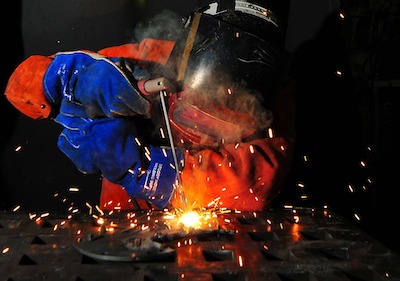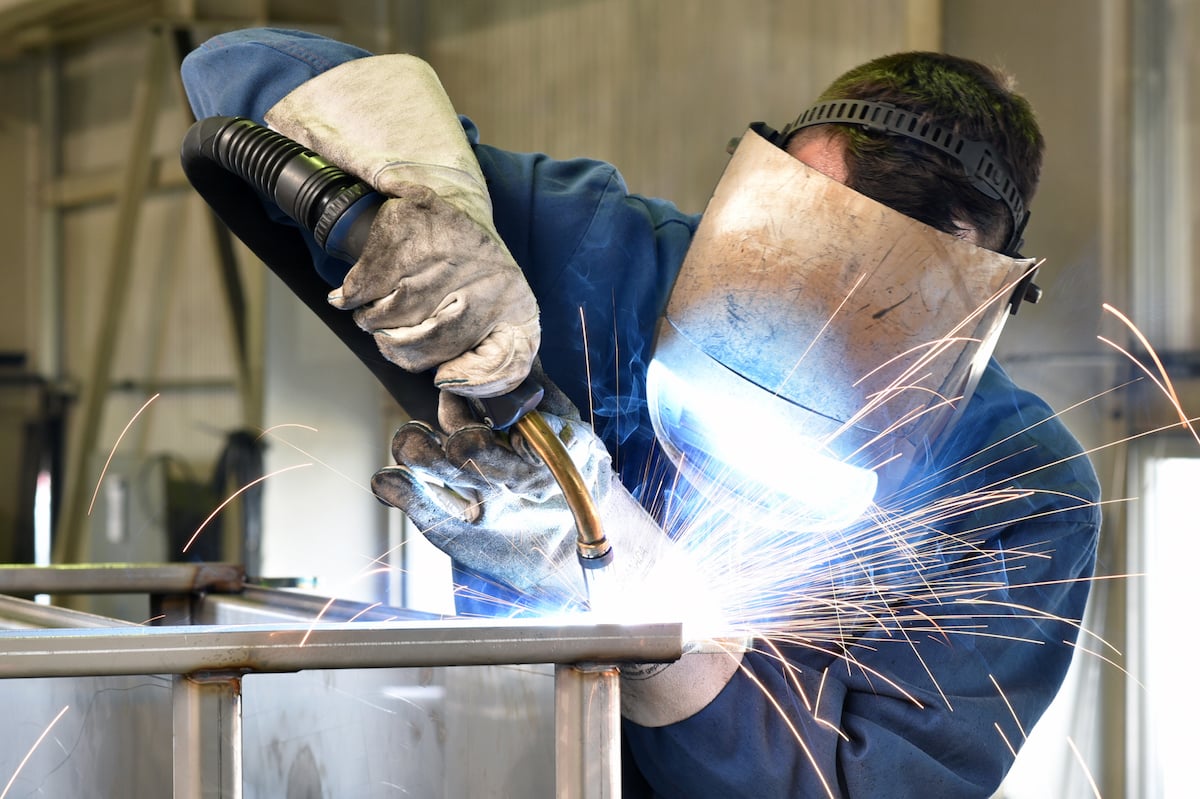Usual Welding Fixing Issues and How to Address Them Successfully
Welding repairs commonly encounter a series of issues that can threaten the honesty of the end product. Common troubles include poor infiltration, porosity, and misalignment, among others. Each problem provides unique challenges that call for certain strategies for resolution. Comprehending these issues is crucial for welders aiming to enhance their results and abilities. This conversation will explore these common welding repair work issues and reliable methods to resolve them.
Poor Penetration
Poor penetration happens when the weld steel stops working to fully fuse with the base product, causing weak joints and potential architectural failings. This issue commonly stems from inadequate warm input, inaccurate electrode angle, or improper welding rate. Welders may come across insufficient infiltration because of a mistake of the essential parameters for a details product density or kind. Furthermore, contamination on the base material's surface area can prevent reliable bonding, exacerbating the problem. To resolve inadequate penetration, welders should assure proper settings on their equipment and preserve a clean job surface area. Regular evaluation of welds is advised to determine any shortages early, permitting timely improvements and the prevention of jeopardized architectural stability in bonded assemblies.
Porosity
Porosity is a typical issue in bonded joints that materializes as little gas bubbles trapped within the weld metal. This issue can jeopardize the honesty of the weld, resulting in minimized strength and prospective failure under anxiety. Montana Mobile Welding and Repair Belgrade Fabrication. Porosity commonly arises from contamination, dampness, or improper welding strategies, which allow gases to leave right into the molten weld pool. To address porosity, welders should guarantee appropriate surface preparation, maintain a clean workplace, and utilize suitable welding specifications. In addition, selecting the right filler product and shielding gas can minimize gas entrapment. Regular examination and screening of welds can aid identify porosity early, guaranteeing prompt corrective actions are taken, therefore preserving the quality and dependability of the welded framework
Imbalance
Imbalance in welding can occur from numerous elements, consisting of improper configuration and thermal development. Comprehending the origin creates is vital for reliable resolution. Several correction methods are offered to realign parts and guarantee architectural honesty.
Sources of Imbalance
Welding misalignment typically originates from a variety of underlying concerns that can jeopardize architectural honesty. One main reason is incorrect fit-up of parts prior to welding, which can cause gaps and unequal surfaces. Variants in thermal growth throughout the welding procedure can likewise lead to distortion, especially if the materials being joined have different coefficients of development. In addition, poor fixturing and securing may fall short to hold parts firmly in place, bring about motion throughout welding. Poorly conserved tools, including welding machines and devices, may introduce incongruities in the weld grain, more contributing to misalignment. Operator error, stemming from inadequate training or experience, can also play a considerable function in developing misaligned welds.

Correction Strategies Readily Available
Resolving imbalance efficiently requires a mix of corrective techniques tailored to the particular issues available. One typical approach is using fixtures or jigs to hold parts in the correct placement during welding, ensuring regular placement. Furthermore, pre-heating the products can assist reduce distortion and improve fit-up. For considerable misalignment, mechanical adjustment methods, such as using hydraulic jacks or clamps, can be used to remedy the placement before welding. Post-weld warmth therapy may additionally be essential to soothe stresses brought on by imbalance. Lastly, mindful inspection and change throughout the arrangement stage can protect against imbalance issues from ending up being significant problems, promoting a smoother welding process and enhancing overall architectural stability.
Distortion
Distortion is a common challenge in welding that can emerge from various aspects, including unequal heating and air conditioning. Comprehending the root causes of distortion is important for implementing effective avoidance techniques. Resolving this problem not only enhances architectural honesty but likewise improves the overall quality of the weld.
Sources of Distortion
When subjected to the intense warm of welding, materials often undergo changes that can result in distortion. This sensation mainly occurs from thermal expansion and tightening during the welding procedure. As the weld location warms up, the material expands; upon cooling, it gets, which can produce internal tensions. On top of that, uneven home heating across a work surface can exacerbate these tensions, leading to bending or flexing. The type of material additionally plays a substantial duty; steels with differing thermal conductivity and coefficients of growth may respond in a different way, resulting in unpredictable distortions. Furthermore, inadequate joint style and poor fixturing can add to imbalance during welding, increasing the probability of distortion. Understanding these causes is important for efficient welding repair work and prevention approaches.
Prevention Techniques
Efficient prevention methods for distortion during welding emphasis on regulating warm input and making sure appropriate joint layout. Keeping a regular heat input assists to reduce thermal expansion and contraction, which can bring about distortion. Utilizing techniques such as pre-heating the workpiece can also lower the temperature slope, advertising uniform heating. In addition, selecting suitable joint designs, such as T-joints or lap joints, can improve stability and lower stress concentrations. Carrying out proper fixturing to safeguard the work surfaces in position additionally help in preserving placement throughout the welding procedure. Staggered welding series can distribute heat more uniformly, stopping local distortion. By using these techniques, welders can significantly decrease the probability of distortion and boost the general quality of their welds.
Splitting
Breaking is a common problem encountered in welding repairs, often arising from various aspects such as inappropriate cooling prices, product selection, or poor joint preparation. The event of splits can considerably jeopardize the honesty of the weld, leading to possible failures throughout operation. To resolve this concern, welders need to initially evaluate the origin creates, making certain that products work and appropriately chosen for the details application. e6010 electrode Furthermore, controlling the air conditioning price during the welding procedure is important; rapid cooling can cause stress and cause breaking. Proper joint layout and prep work likewise add to minimizing the danger. Implementing these techniques can enhance weld high quality and durability, inevitably minimizing the probability of breaking in completed weldments.

Insufficient Combination
A considerable issue in welding repair services is insufficient combination, which happens when the weld steel does not appropriately bond with the base product or previous weld passes - Welding. This flaw can lead to weaknesses in the joint, potentially compromising the honesty of the welded structure. Aspects adding to insufficient blend include not enough warmth input, improper welding method, and contamination of the surfaces being joined. To address this issue efficiently, welders must assure correct pre-weld cleansing and surface area prep work, in addition to change their welding parameters to achieve sufficient infiltration and fusion. Regular evaluation throughout the welding process can also assist recognize incomplete fusion early, permitting for timely restorative steps to boost the overall top quality of the weld
Overheating
While welding repairs can boost structural integrity, overheating offers a substantial challenge that can cause material destruction. Extreme heat during welding go to my site can alter the mechanical residential properties of steels, leading to reduced toughness, raised brittleness, and warping. This phenomenon is particularly essential in high-stress applications where architectural integrity is paramount. Determining overheating can entail aesthetic assessments for discoloration or distortion, as well as monitoring temperature throughout the welding process. To minimize the threats related to overheating, welders should use suitable techniques, such as regulating warmth input, readjusting travel rate, and using ideal filler products. Furthermore, carrying out pre- and post-weld warm therapies can assist restore product homes and enhance the total quality of the fixing, ensuring lasting performance and safety and security.
Frequently Asked Inquiries
What Are the Usual Signs of a Welding Problem?

How Can I Test My Welds for High quality?
To evaluate welds for top quality, one can make use of aesthetic inspections, ultrasonic screening, and radiographic techniques. Each method assures structural integrity, recognizes defects, and confirms adherence to specified requirements, ultimately boosting the integrity of the bonded joints.
What Safety and security Preventative Measures Should I Take While Welding?
When welding, one must focus on safety by wearing proper personal protective tools, ensuring appropriate air flow, protecting flammable products away, preserving a tidy work area, and being aware of surroundings to stop injuries useful site and crashes.
Can I Repair a Weld Without Remodeling the Entire Joint?
Fixing a weld without redoing the whole joint is feasible, relying on the damages (Montana Mobile Welding and Repair Belgrade). Strategies such as grinding, including filler material, or using a welding process can successfully deal with specific defects while maintaining the surrounding structure
What Devices Are Essential for Reliable Welding Repair Works?
Crucial tools for effective welding repairs consist of a welding machine, wire brush, mill, safety gear, clamps, and filler materials. Each device plays a vital function in ensuring top quality and security during the repair process. Porosity typically occurs from contamination, wetness, or inappropriate welding techniques, which permit gases to run away into the liquified weld swimming pool. Improperly kept devices, including welding equipments and devices, may introduce inconsistencies in the weld grain, more adding to misalignment. When subjected to the intense warm of welding, products frequently go through changes that can lead to distortion. Breaking is a typical concern run into in welding fixings, typically resulting from different aspects such as inappropriate cooling rates, material choice, or inadequate joint prep work. A considerable problem in welding repair services is insufficient blend, which happens when the weld metal does not properly bond with the base material or previous weld passes.